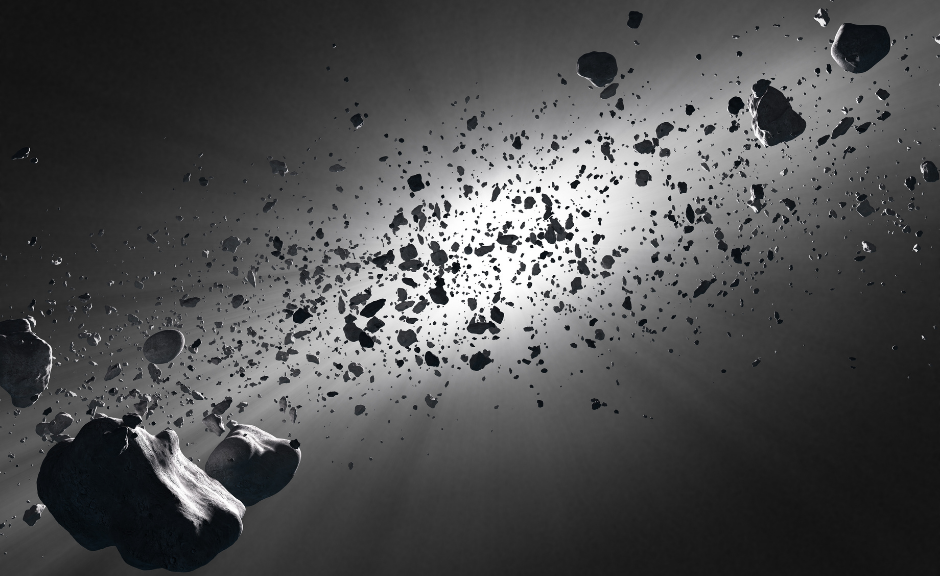
Facts about asteroids
Lets kick things off with a quick fire round of asteroid facts:
- Asteroids are small, rocky objects that orbit the Sun.
- The first asteroid was Ceres, discovered by Giuseppe Piazzi in 1801.
- There are currently over 1,113,527 known asteroids in our solar system at the time of writing.
- Most asteroids are found orbiting in the Asteroid Belt, a series of rings located between the orbits of Mars and Jupiter.
- Astronomer William Herschel first coined the word asteroid, which means “star like” in 1802.
- As well as being the first asteroid discovered, Ceres is also the largest known asteroid at 933 kilometers (580 miles) across. The smallest known asteroid, 1991 BA, is only 6 meters (20 feet) across.
- Current theory suggest that asteroids are planetisimals – the building blocks of planets – that were never incorporated into one of the eight planets in our solar system.
- Apollo objects are asteroids whose orbit crosses the orbit of Earth.
- An asteroid impact around 65 million years ago caused a chain reaction that led to the extinction of the dinosaurs and affected all life on Earth, according to scientists.
- An asteroid about .15 kilometers (.1 miles) in width is believed to have exploded over Siberia, causing damage within a radius of hundreds of kilometers (miles).
- Most asteroids are irregular in shape because they are too small to exert enough gravitational pull to become spherical in shape.
- Some asteroids are blown out comets. When the ice is gone, all that remains is the rocky material.
- A meteoroid (piece of asteroid) the size of a car falls into the Earth’s atmosphere on average once every year. This creates a bright fireball effect, but it usually burns up in the atmosphere before it reaches the ground.
Asteroid Facts – What Is an Asteroid?
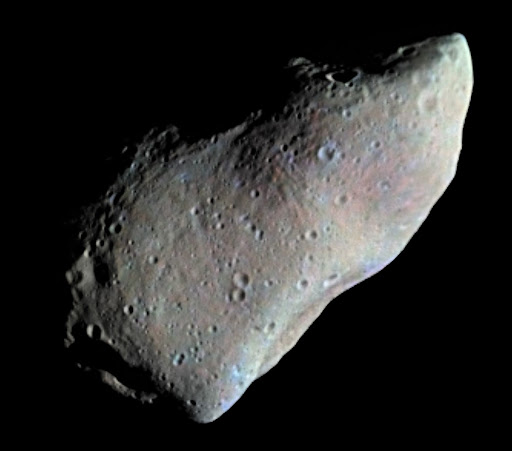
An asteroid is a space rock that orbits the Sun. In terms of composition, they are made up of mostly rock and metals, as opposed to comets which are mostly icy.
Asteroids are also called minor planets or planetoids because they revolve around the Sun just like planets do. However, these space rubbles are much much smaller. To compare, the largest asteroid, Ceres, is 13.4 times smaller than Earth.
No two asteroids are alike. They are all unique, just like every object in the solar system. They have potato-like irregular shapes and only a few of them are large enough to have nearly spherical shapes. Some asteroids are binary, which means they orbit a common center of mass, while other asteroids have smaller moons.
Most asteroids are located in the main asteroid belt but many of them also share orbits with planets. These orbit-sharing objects are called trojan asteroids. Jupiter has the most trojans among the planets.
Some asteroids that wander close to us are considered Near-Earth Objects (NEOs). These objects can be especially dangerous if they hit Earth, especially if they are very large. Because of that, scientists are learning more about the nature of asteroids and how we can possibly deflect them.
Asteroid vs Comet
Asteroids and comets are small solar system bodies. The biggest difference between them is that asteroids have metal and rocky composition. On the other hand, aside from dust and rock, comets are mostly made up of ice.
Another difference is their location. Most asteroids are located in the inner solar system, in the asteroid belt. Comets are located farther from the Sun, in the Kuiper Belt and even in the Oort Cloud, away from the melting heat of the Sun.
When the highly elliptical orbits of comets do bring them into the inner solar system, their ice would melt causing them to burn and form tails. Examples of comets that cause natural light displays are Halley’s Comet and Hale-Bopp comet, among others.
Meteoroids
Meteoroids are chipped portions of either comets or asteroids. These objects have broken up from the bigger body so they are much smaller than asteroids. In terms of size, meteoroids are 1 meter (or less) in diameter while asteroids are bigger than 1 meter.
Some meteoroids are even the same size as a grain of sand. Those that are very small are called micrometeoroids. When meteoroids enter the Earth’s atmosphere, they burn up and cause meteor showers or “shooting stars.”
When meteoroids are large enough and survive the travel through Earth’s atmosphere, they will reach the ground as meteorites.
Where Do Asteroids Come From?
Asteroids came from the same molecular cloud that formed the Sun and the planets. Most of the materials in that cloud formed the Sun and the rest became the planets.
The planets started as small bodies called planetesimals. Starting as small grains of gas and dust, they accrete material to increase in size and become more massive. Not only do these bodies accumulate additional material, but they also collide and merge with other planetesimals to form developing planets—protoplanets.
However, after Jupiter formed, its strong gravity disrupted planetesimals from coming together. The early migration of Jupiter also affected the further development of these small solar system bodies.
In short, asteroids are the so-called leftovers from the formation of the solar system. Though they were not able to successfully become planets, they hold clues as to what it was like 4.6 billion years ago when the solar system formed.
Where Are Asteroids Located?
Most asteroids in the solar system are found in the asteroid belt, the area between the red planet, Mars, and Jupiter, the king planet. Aside from that, there are also Trojan asteroids that share orbits with bigger objects. Asteroids that can potentially come close to us are called near-Earth objects.
Asteroid Facts – The Asteroid Belt
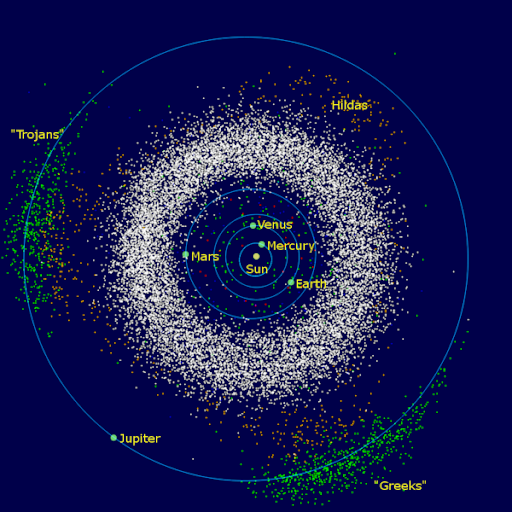
The majority of the known asteroids in the Solar System orbit the Sun in a band between the orbits of Mars and Jupiter. This band is commonly referred to as the Asteroid Belt.
Although there are hundreds of thousands of asteroids in the Asteroid Belt, there are only around 200 known that exceed 100 km in diameter, making the majority of the asteroids realtively small objects.
Current theories suggests that the asteroids found in the Asoteroid Belt are the remnants of a planet that failed to form during the development of the Solar System. More specifically, it is believed that when Jupiter formed its huge mass and gravitational pull disrupted the material in the Asteroid Belt to accrete, or join together, to form into a planet.
If all the material in the Asteroid Belt were to be combined, the resulting object’s diameter is projected to be at most about half that of Earth’s moon.
Trojan Asteroids
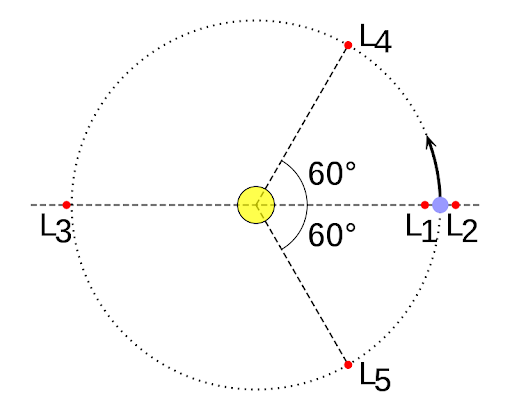
Trojan asteroids orbit together with bigger astronomical bodies. Most of them are swarmed in Jupiter’s orbit, before and after the planet. These co-orbitals never collide with Jupiter because they lie in areas called the Lagrangian points.
There are five Lagrangian points in every system of large bodies. In the Sun-Jupiter system, the trojan asteroids lie near the stable points, L4 and L5. These two groups are positioned 60° ahead and 60° after Jupiter so they never collide with the gas giant.
To easily identify the Jupiter trojans, they are named after characters from Greek mythological characters. The leading group in L4 is called the Greek camp while the trailing group is called the Trojan camp.
It is believed that there are as many asteroids in Jupiter’s orbits as there are in the main asteroid belt.
After trojans were found in Jupiter, similar orbit-sharing asteroids were also discovered in the Lagrangian points of other planets. Some of them were found in the orbits of Neptune, Mars, Uranus, and even Earth. Temporary trojans were also found accompanying Venus and larger asteroids, Ceres and Vesta.
Near-Earth Objects (NEOs)
Whether comets or asteroids, anything that can come close to our planet is called a near-Earth object (NEO).
An object is considered a NEO if its orbit brings it to less than 1.3 astronomical units (AU) from the Sun. Since 1 AU is the distance between the Sun and Earth, that takes it to around 0.3 AU from Earth’s orbit. This distance brings it to 45 million kilometers (28 million miles) from Earth’s path. There are around 28,000 NEOs detected so far.
Types of Asteroids
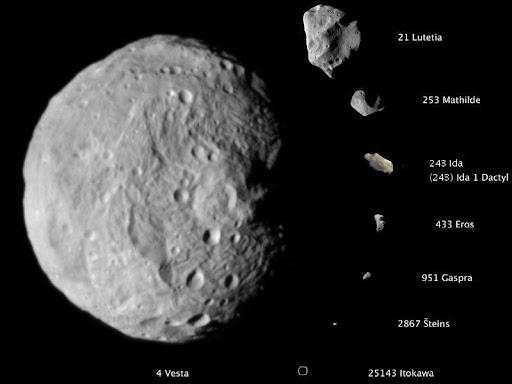
Asteroids are unique but most of them can be classified into three different types. These classifications are largely based on their compositions and appearance. Interestingly, asteroids of the same type clump together in different areas of the asteroid belt.
C-type
C-type asteroids are called so because they are “carbon-rich.” They are the most common type as they account for about 75% of all the known asteroids. Aside from clay, they are also composed of silicate rocks.
Carbonaceous asteroids are easy to identify because of their dark appearance. They are said to be very ancient objects that have not gone through many changes ever since the formation of the solar system. Asteroids of this type are mostly found around the outer regions of the asteroid belt.
An example of a C-type asteroid is 253 Mathilde.
S-type
S-type asteroids stand for “silicaceous” or “stony.” They consist of nickel-iron and silicate materials. Asteroids of this type have a greenish to reddish appearance.
Asteroids of this type are common in the inner regions of the asteroid belt and less common farther out. About 17% of all the known asteroids are S-type. An example is the stony asteroid 433 Eros.
M-type
M-type asteroids are “metallic,” which seem to be mostly composed of nickel-iron materials. These metal-rich asteroids have a reddish appearance. They mostly dominate the middle part of the asteroid belt. 21 Lutetia is an example of an M-type asteroid.
Notable Asteroids
According to NASA, there are around 1,113,527 asteroids known—and this number is only expected to grow. With all the millions of asteroids out there, the largest ones easily stand out because of their size. They are also some of the earliest asteroids to be discovered.
Below are the most notable asteroids and the first four to be discovered.
Ceres

Ceres is the first asteroid discovered. Because of its size and spherical shape, there was a time when it was also considered a planet. Now, it has a double classification as it is also recognized as a dwarf planet.
As the largest asteroid, Ceres accounts for about 25% of the total mass of the asteroid belt. It was visited by the Dawn spacecraft in 2015.
Pallas
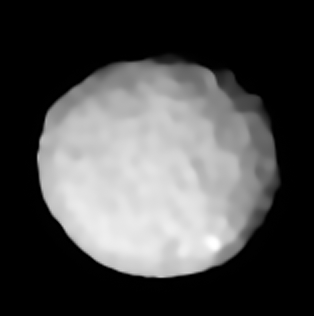
Pallas is the third-largest asteroid known. Discovered in 1802, it was the second object to be considered an asteroid after Ceres. It has around 7% of the asteroid belt’s total mass.
Juno
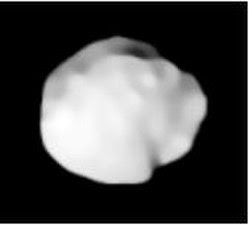
Juno is a large asteroid in the main belt. This S-type asteroid was thought to be a planet at first when it was discovered. It accounts for about 1% of the mass of the belt.
Vesta
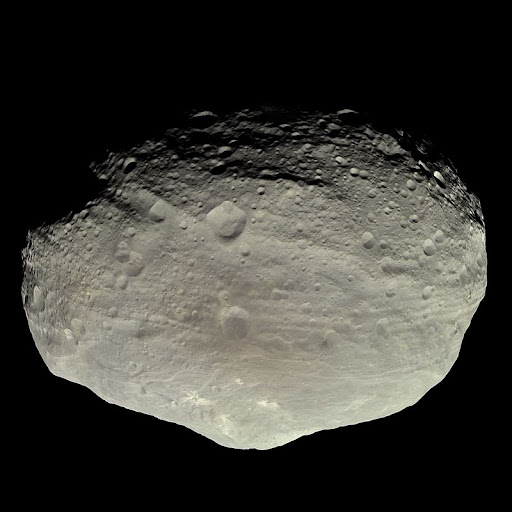
Vesta is the fourth asteroid to be discovered. It is the second-largest asteroid, with a diameter of around 525 kilometers (326 miles). This is a unique object as it is the only known protoplanet believed to have a differentiated interior. It makes up around 9% of the asteroid belt’s mass.
Asteroid Facts – History and Discovery of Asteroids
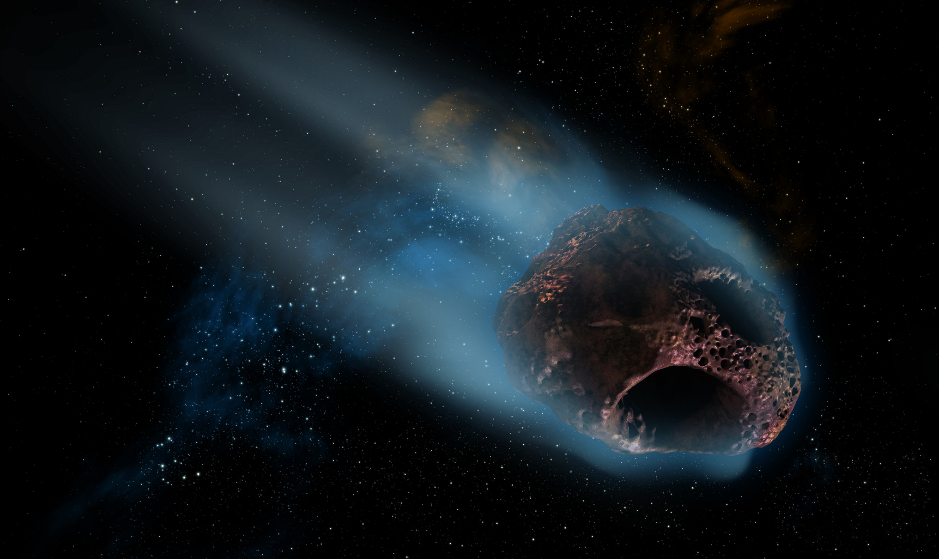
In 1801, Giuseppe Piazzi discovered what he believed to be a new planet. He named the newfound object Ceres, after the Roman goddess of harvest.
Soon after Ceres’ discovery, similar objects were found. It was soon realized that these new objects were not, in fact, planets, but some other type of celestial body. One characteristic these objects shared was their resemblance to distant stars as viewed through the telescopes of the time.
As a result of their similar appearance to stars the objects were named “asteroids,” meaning “star-shaped.”
More asteroids were discovered in the years that followed, including Pallas, Juno, and Vesta. Astrophotography was also adopted in the search for asteroids which allowed more asteroids to be discovered.
Names and Mythology
When asteroids are discovered, they are given provisional designations that contain the year when they were discovered.
When their orbits are finalized and confirmed, they are assigned a permanent number and a name. Mostly, people just call them with the names given, dropping the numbers altogether.
The first asteroids to be discovered were given names from mythological characters. For example, Ceres was named after the Roman goddess of grain whose Greek counterpart is Demeter. The asteroid Juno was named after the chief goddess who resembles Hera in Greek mythology.
Asteroids now are not anymore limited to names inspired by classical mythology. The International Astronomical Union (IAU) is now the official body that regulates how these objects are named. Unique names are considered as long as they are not offensive and political.
Today, asteroid names can draw inspiration from everything around us. Some unique examples are 8749 Beatles, 9007 James Bond, 12818 Tomhanks, and more.
Asteroid Impacts in History
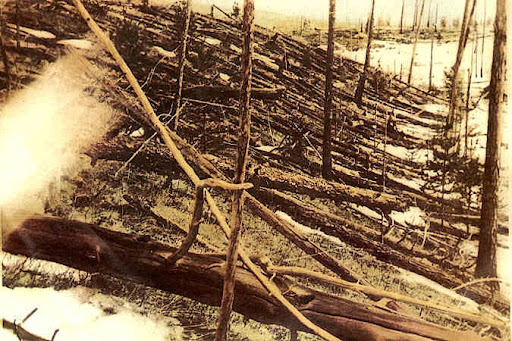
Craters and depressions on the Earth’s surface tell us that impact events have occurred on our planet in the past. Over the past 600 million years or so, around 60 asteroids and other objects have collided with Earth and caused nuclear bomb-like explosions.
The Tunguska event is perhaps the most well-known asteroid impact in modern times. It occurred in 1908 in Siberia. It caused a big explosion that flattened around 80 million trees.
This explosion was caused by a meteor air burst. This means that the asteroid exploded mid-air when it was still traveling in the atmosphere. It did not leave a crater on the ground but it is still regarded as one of the largest and most powerful impact events in recent history. An explosion this big can wipe out a big metropolitan area.
The largest crater on Earth that was caused by impact is the Vredefort Crater in South Africa. Estimated to have formed 2 billion years ago, this crater has a diameter of around 190 km (118 mi). Other big impact craters are the Yarrabubba crater, the Sudbury Basin, and the Meteor Crater of Arizona, among others.
How Often Do Asteroids Strike Earth?
Collisions and impact events are common in the solar system. The cratered surfaces of moons and other terrestrial planets are proof of that.
Because of the different compositions of gas giants, collisions do not leave impact craters. Instead, these objects burn up when asteroids and comets reach these worlds. In 1994, scientists observed that the comet Shoemaker-Levy 9 disintegrated and collided with Jupiter.
Meteoroids and micrometeoroids hit Earth’s atmosphere every day. However, since they are just as big as a grain of sand, their small size does not cause any harm or damage.
According to scientists, any object as big as 1 kilometer or more would be dangerous to Earth. It is estimated that asteroids around 1 km (0.6 mi) across hit Earth every 500,000 years or so.
Larger impacts, or objects around 5 km (3 mi) in size, collide with our planet around every 20 million years. Such impacts endanger human life and civilization as a whole.
Asteroid Missions
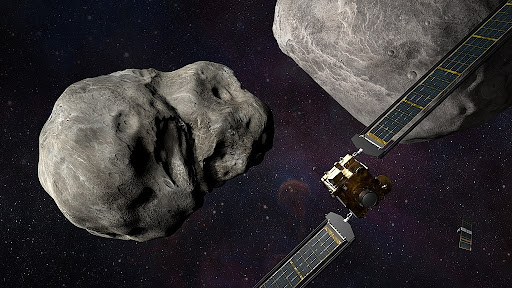
Asteroid collisions and impacts have occurred before and they will surely occur again in the future. With things like the Tunguska event, the possibility of asteroid impacts is very real. Because of that, NASA has the Asteroid Watch Dashboard to monitor asteroids and comets that come close to Earth.
Toutatis and Apophis are examples of potentially hazardous objects (PHOs) that have been under the watch for years. After analyzing their orbits, NASA announced that the Earth is safe from Apophis in the next 100 years. Toutatis will have another close approach to Earth in 2069.
Asteroid missions have been sent in the past and the present to help us understand these objects even better. The early missions Galileo and Near-Earth Asteroid Rendezvous (NEAR) provided great data about asteroids. The Cassini spacecraft also made a flyby to the asteroid as it was on its way to Saturn.
Japan’s Hayabusa2 sample return mission was successful in bringing back materials from asteroid Ryugu. NASA also has a sample mission to asteroid Bennu with the OSIRIS-REx.
Deflecting an Asteroid
NASA’s Double Asteroid Redirection Test (DART) is a mission to test our chances against asteroids. Launched in November 2021, the goal of this mission is to strike on Dimorphos, a small asteroid moon of Didymos.
This is very interesting as this is the first mission of its kind. It aims to see how the spacecraft’s impact affects the orbit of the asteroid. Data from this mission will tell us if redirection is possible for asteroids coming to Earth in the future.
Space Concept: Asteroid Mining
Asteroids are rich sources of metals and minerals which makes them a potential resource for mining. They are abundant in space and the possibility is just endless. This is why the space mining concept created a buzz around the 2010s. It gave rise to startups like Planetary Resources and Deep Space Industries.
While asteroids may sound like ideal sources of material, bringing these materials back to Earth costs a lot. The sample return missions Hayabusa and Hayabusa2 cost $300 and $800 million respectively to bring 1 milligram and 100 milligrams of asteroid samples. Because of cost and other challenges, there have not been many talks about space mining.
More Interesting Asteroid Facts
- Water from Earth may have originated from asteroid impacts. This is a possibility that scientists discovered after studying the Hayabusa mission return samples from asteroid Itokawa.
- The International Asteroid Day is held on June 30 every year. It was proclaimed by the United Nations to raise awareness about asteroids and the impact they can bring. This date was chosen after the Tunguska event on June 30, 1908.
- An asteroid impact is likely the reason why the dinosaurs are now extinct. The Chicxulub impact in Yucatan Peninsula, Mexico is said to coincide around the time that the dinosaurs were wiped out around 66 million years ago.
- The asteroid Vesta is the brightest asteroid as seen on Earth. With an apparent magnitude of around 5.1 to 8.48, it is sometimes visible to the naked eye under good sky conditions.
- Moons are also discovered around asteroids. The first of which is Dactyl, which was found to be orbiting asteroid Ida. This discovery was made by the Galileo spacecraft when it visited the asteroid in 1993.
- NEAR Shoemaker was the first spacecraft to land on an asteroid. Though it was not designed to be a lander, it touched down on Eros and survived there for weeks.
If you liked our post on Asteroid facts, why not check out our post on 50 incredible space facts!
Sources:
Image Sources:
Asteroid: https://upload.wikimedia.org/wikipedia/commons/8/81/951_Gaspra.jpg
Asteroid belt: https://upload.wikimedia.org/wikipedia/commons/f/f3/InnerSolarSystem-en.png
Trojan/Lagrangian points: https://upload.wikimedia.org/wikipedia/commons/thumb/b/b8/Lagrange_very_massive.svg/800px-Lagrange_very_massive.svg.png
Types of asteroids: https://upload.wikimedia.org/wikipedia/commons/c/c0/Asteroidsscale.jpg
Ceres: https://upload.wikimedia.org/wikipedia/commons/thumb/7/76/Ceres_-_RC3_-_Haulani_Crater_%2822381131691%29_%28cropped%29.jpg/800px-Ceres_-_RC3_-_Haulani_Crater_%2822381131691%29_%28cropped%29.jpg
Pallas: https://upload.wikimedia.org/wikipedia/commons/d/d4/Potw1749a_Pallas_crop.png
Juno: https://upload.wikimedia.org/wikipedia/commons/thumb/b/b8/3_Juno_VLT_%282021%29%2C_deconvolved.pdf/page1-249px-3_Juno_VLT_%282021%29%2C_deconvolved.pdf.jpg
Vesta: https://upload.wikimedia.org/wikipedia/commons/thumb/5/51/Vesta_in_natural_color.jpg/800px-Vesta_in_natural_color.jpg
Asteroid impact: https://upload.wikimedia.org/wikipedia/commons/e/ed/Tunguska_Ereignis.jpg
Asteroid mission: https://upload.wikimedia.org/wikipedia/commons/thumb/0/0a/Dart_header_2_%281%29.jpg/1024px-Dart_header_2_%281%29.jpg